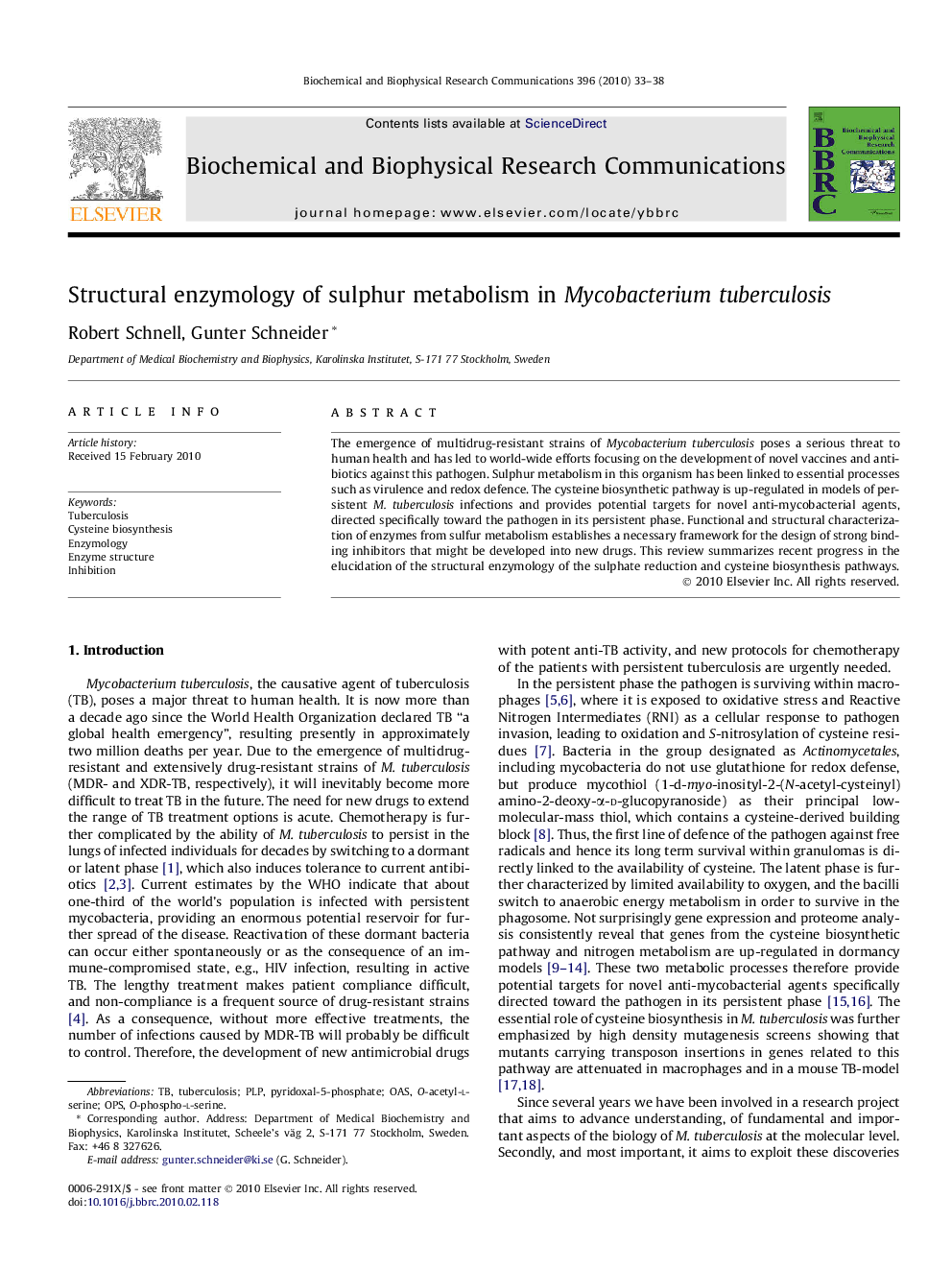| Article ID | Journal | Published Year | Pages | File Type |
|---|---|---|---|---|
| 1932156 | Biochemical and Biophysical Research Communications | 2010 | 6 Pages |
The emergence of multidrug-resistant strains of Mycobacterium tuberculosis poses a serious threat to human health and has led to world-wide efforts focusing on the development of novel vaccines and antibiotics against this pathogen. Sulphur metabolism in this organism has been linked to essential processes such as virulence and redox defence. The cysteine biosynthetic pathway is up-regulated in models of persistent M. tuberculosis infections and provides potential targets for novel anti-mycobacterial agents, directed specifically toward the pathogen in its persistent phase. Functional and structural characterization of enzymes from sulfur metabolism establishes a necessary framework for the design of strong binding inhibitors that might be developed into new drugs. This review summarizes recent progress in the elucidation of the structural enzymology of the sulphate reduction and cysteine biosynthesis pathways.
